The lilacs of Fayuan Temple, the crabapples of Jile Temple, the moutan peonies of Chongxiao Temple, and the chinese peonies of Tianning Temple were once known as the four great flower events of old Beijing. Each spring, the city blooms with vibrant flowers, enchanting poets and scholars who compose verses and couplets. Although only the lilacs of Fayuan Temple remain today, there are still plenty of great spots in Beijing to enjoy crabapples. Join us for a springtime floral event!
Crabapple blossoms, with their deep hues, are among the top ten famous flowers in China, known as the "flower immortal" and the "flower concubine." Their blooming season typically spans from April to May, making them highly valued for their aesthetic appeal and cultural significance. They symbolize happiness and beauty, appreciated both in spring for their blossoms and in autumn for their fruits.
Yuan Dynasty City Wall Relics Park
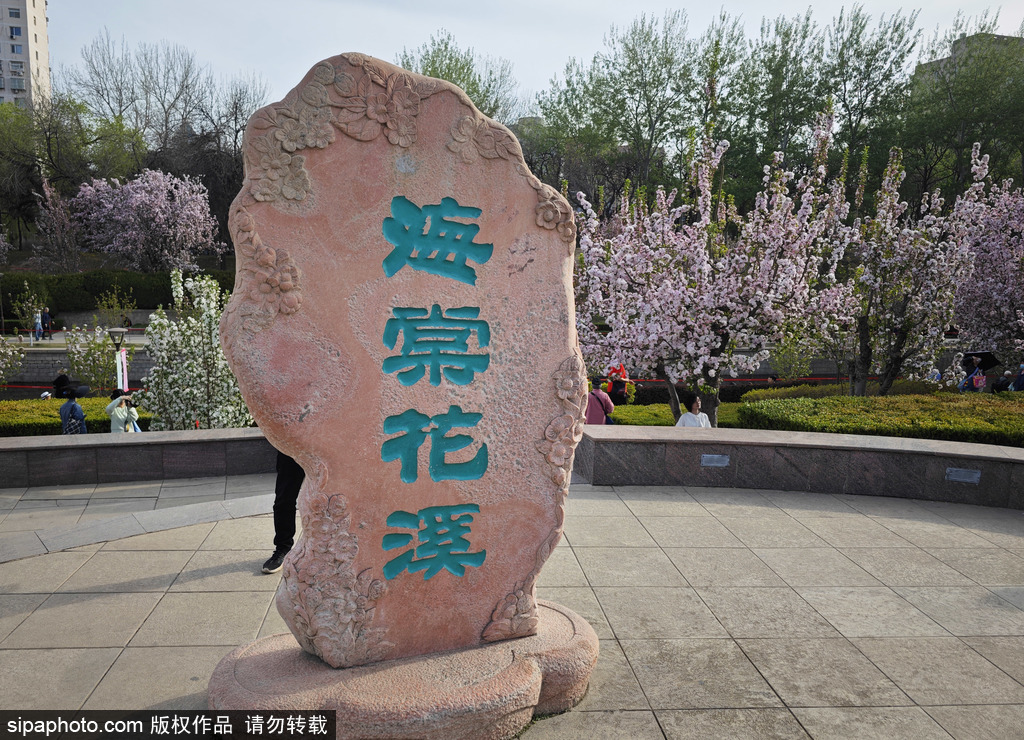
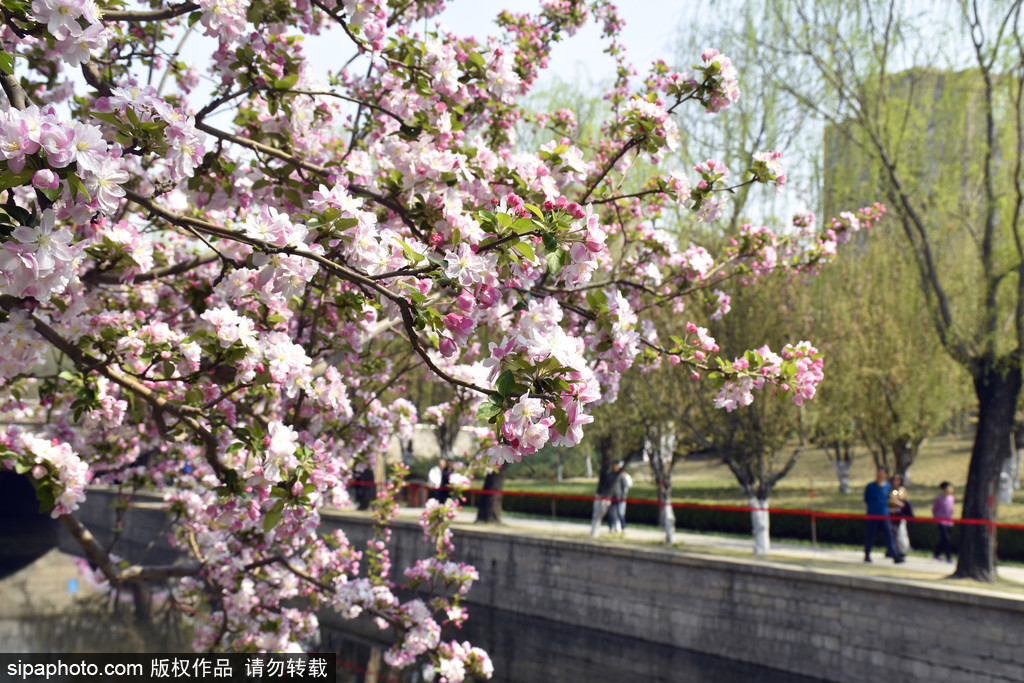
The Yuan Dynasty City Wall Relics Park stretches 9 kilometers in a narrow belt, spanning across Chaoyang and Haidian districts. The Chaoyang section is located along the east and west sides of Beijing's central axis and south of the Olympic Park. It is the largest belt park in Beijing, measuring 4.8 kilometers in length and 130 to 160 meters in width, with a total area of 67 hectares. The park features primary scenic areas such as Yuan City New Image, Peak of the Yuan Dynasty, and Dragon Pond Leaping Fish, along with secondary scenic areas like Imperial Tour, Guests from All Directions, Crabapple Flower Stream, Stable Prosperity, Lanterns on Water Street, and Ancient Tower Melody.
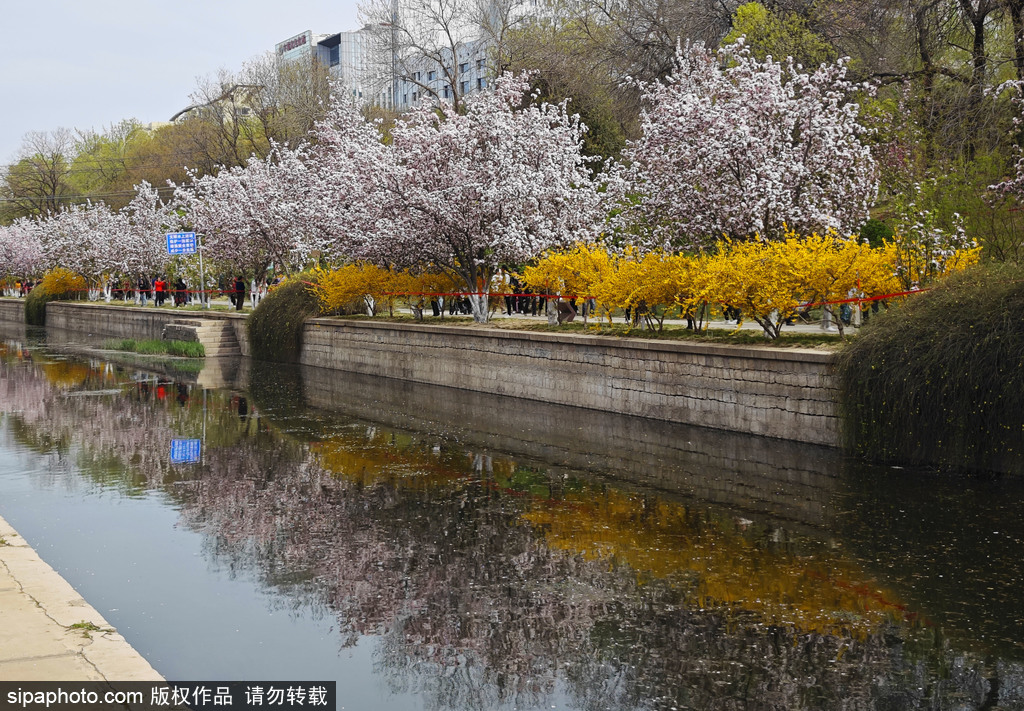
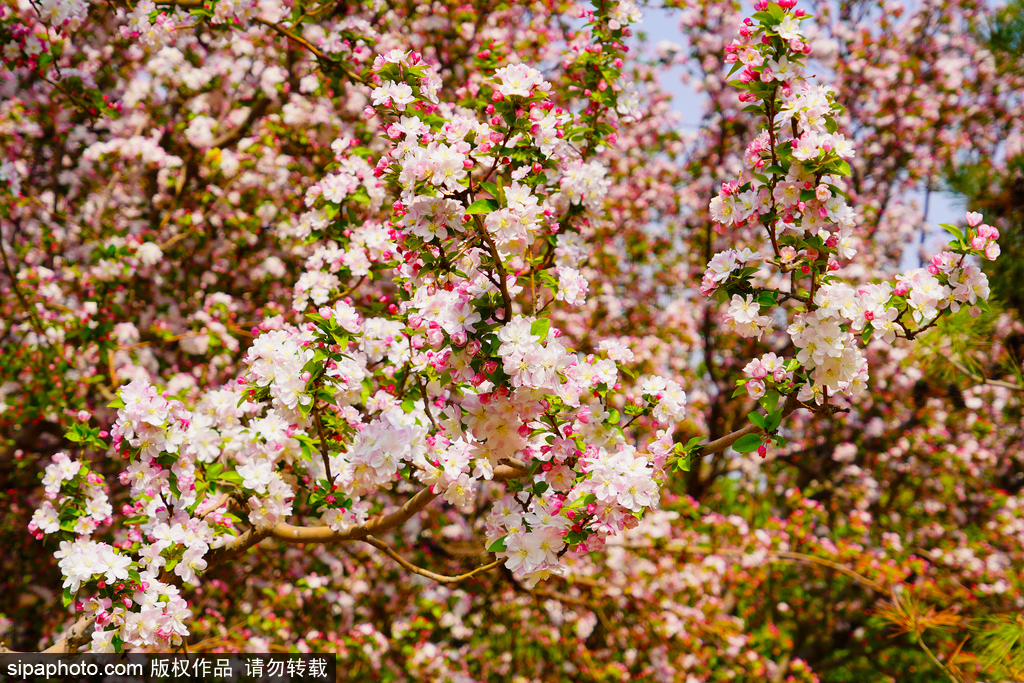
The park's renowned crabapple flowers, along with the peach blossoms of the Beijing Botanical Garden and the cherry blossoms of Yuyuantan Park, are considered one of the three major spring flower events in Beijing. The small Yuehe River banks within the park are adorned with a sea of crabapple blossoms, stretching for 1.1 kilometers, thus earning the name "Crabapple Flower Stream." A stroll along Crabapple Flower Stream has become an essential springtime ritual for many.
The park boasts over 5,000 crabapple trees of 28 varieties, including common ones like Sargent crabapple, golden star crabapple, snowball crabapple, weeping crabapple, and jelly crabapple, as well as new and rare varieties like Louisa, spring snow, pink roof, and pink handkerchief. This makes it the park with the most crabapple varieties and the largest number of crabapple trees in Beijing, with the blooming period extending into mid to late April.
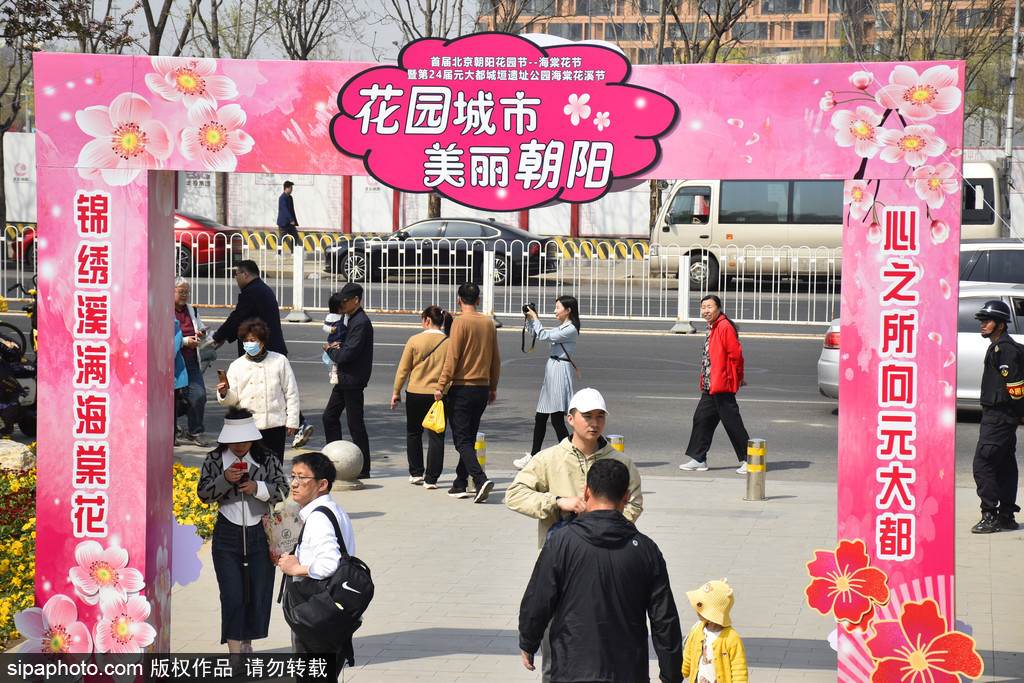
The first Beijing Chaoyang Garden Festival—Crabapple Flower Festival and the 24th Yuan Dynasty City Wall Relics Park Crabapple Flower Stream Festival is ongoing until April 17. This unique urban celebration dedicated to crabapples invites citizens and tourists to enjoy the beautiful flowers, taste crabapple-themed delicacies, paint crabapple artworks, and purchase crabapple bonsai.
The Crabapple Flower Stream Festival includes a cultural market featuring drinks and foods related to crabapple flowers, providing citizens and tourists with a spring feast themed around "exhibition, tour, food, shopping, entertainment, and fitness."
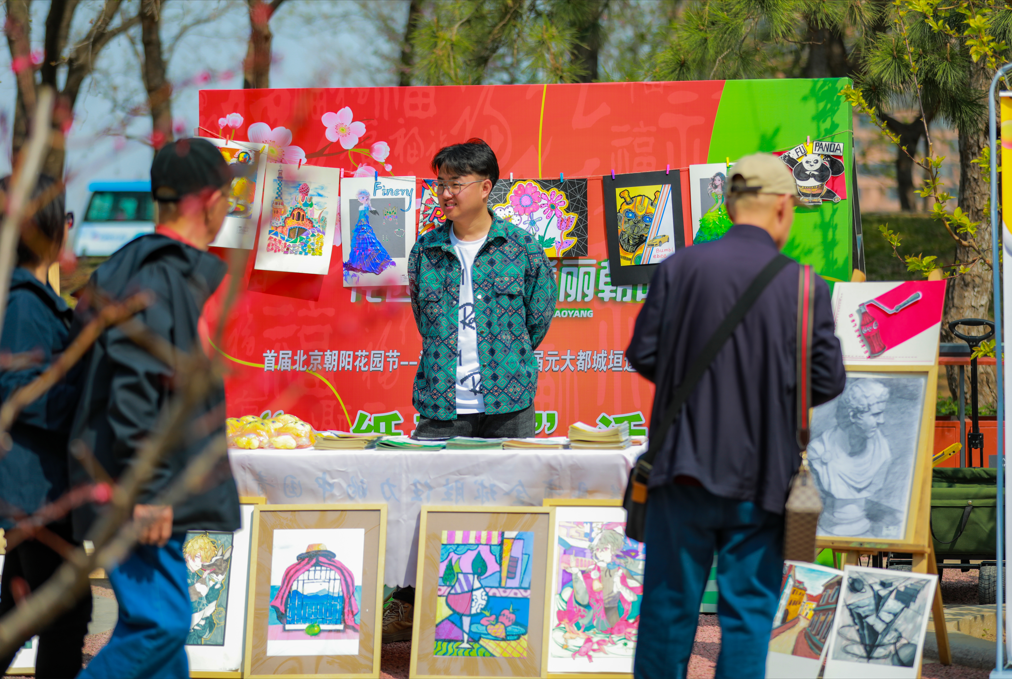
Stroll along the flower stream, savor the spring scenery, and partake in an elegant sea hibiscus banquet.
Address: No. 24, Anwai Xiaoguanjie (St), Chaoyang District, Beijing
Taoranting Park
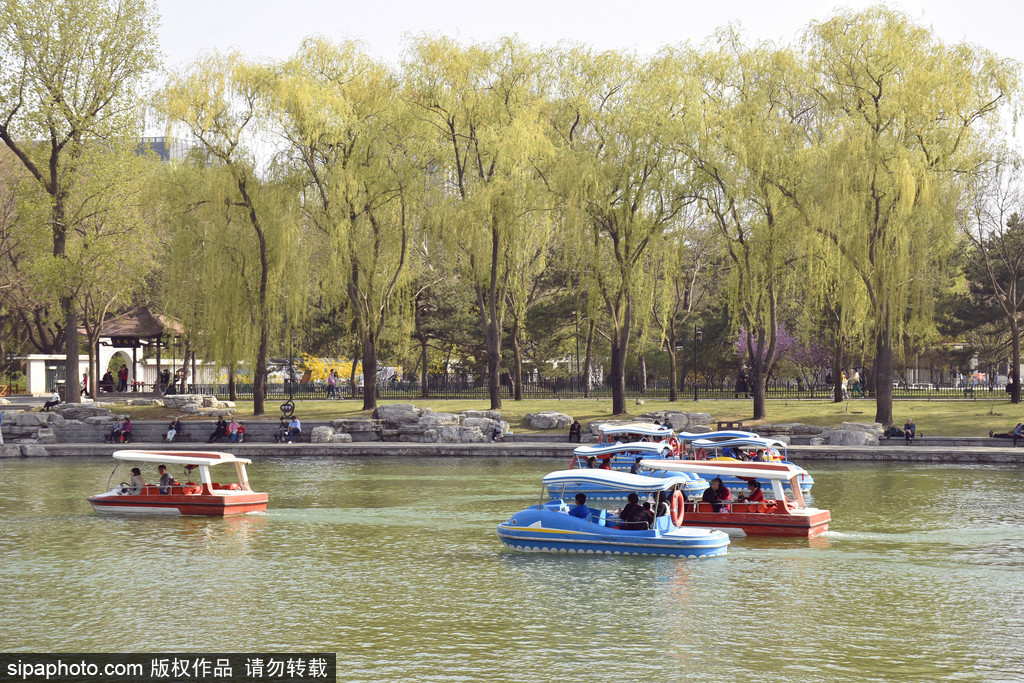
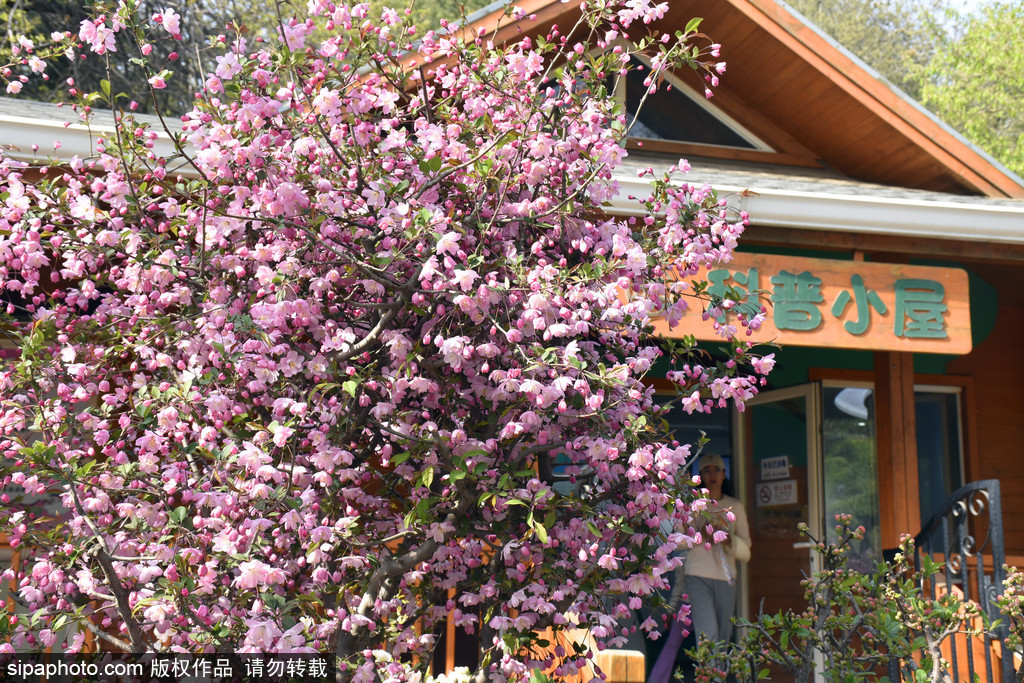
Taoranting Park, located northwest of Taoran Bridge on Beijing's South Second Ring Road, was the first modern garden park built in Beijing after the founding of the People's Republic of China. Its name is derived from the poetic sentiment of Tang Dynasty poet Bai Juyi's verse, "Let's wait for the chrysanthemums to turn yellow and the home-brewed wine to mature, and we shall get drunk and be happy together." As a frequent haunt of poets and scholars, Taoranting has inspired countless poems and inscriptions.
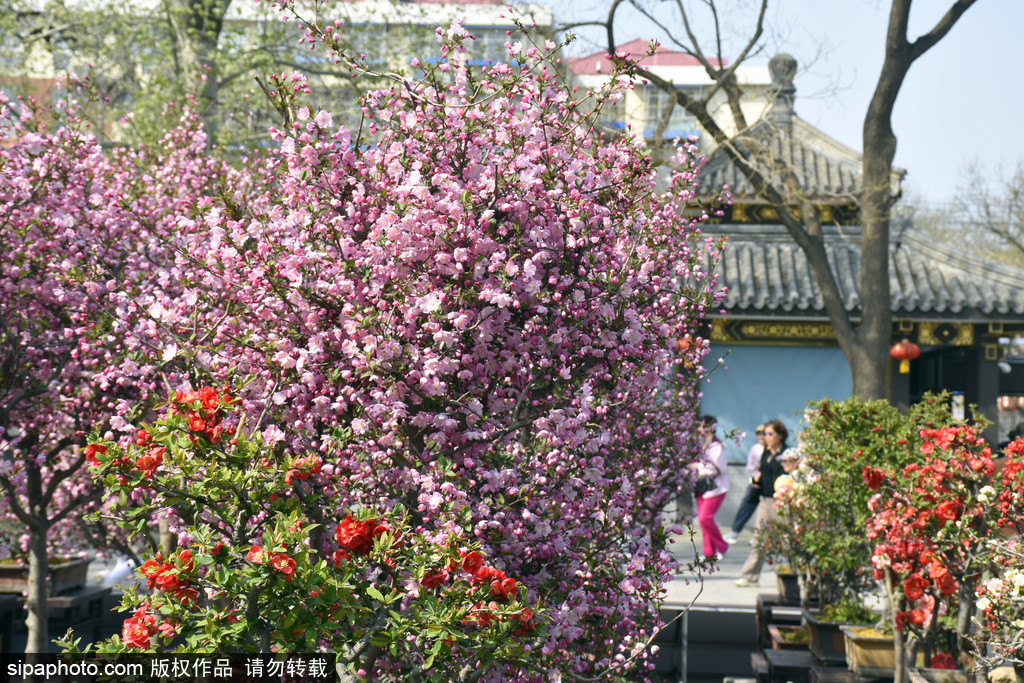
For several years, the park has cultivated a spring flower landscape dominated by crabapples. The park features all four types of crabapples: Sargent crabapple, weeping crabapple, Chaenomeles speciosa (Chinese quince), and Malus halliana (hall crabapple), as well as ornamental varieties like Radiant and Royalty.
As temperatures rise, nearly 20,000 square meters of ground-planted ornamental crabapples throughout the park will enter their peak blooming period, competing in beauty with other spring-blooming shrubs like forsythia, Prunus tomentosa, and peach blossoms, creating a colorful and vibrant botanical scene. Walking through the park feels like being in a sea of flowers.
The ninth Taoranting Park Crabapple Spring Flower Cultural Festival runs until April 28, showcasing one premium flower viewing route, two nighttime viewing routes, three major scenic spots, three premium exhibitions, and five cultural activities. This festival offers visitors a delightful and refreshing cultural experience, allowing everyone to create their own beautiful springtime memories in Taoranting Park.
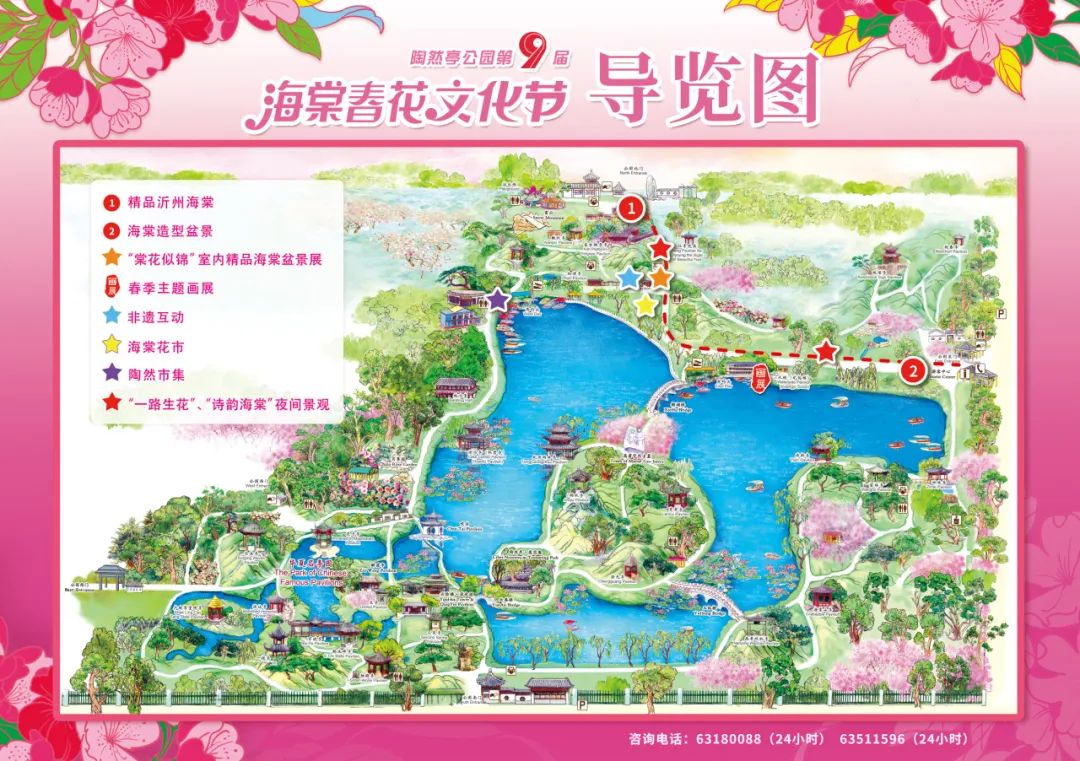
Address: No. 19, Taiping Jiedao(St), Taipingjie(St)Taoranting, Xicheng District,Beijing
Beihai Park
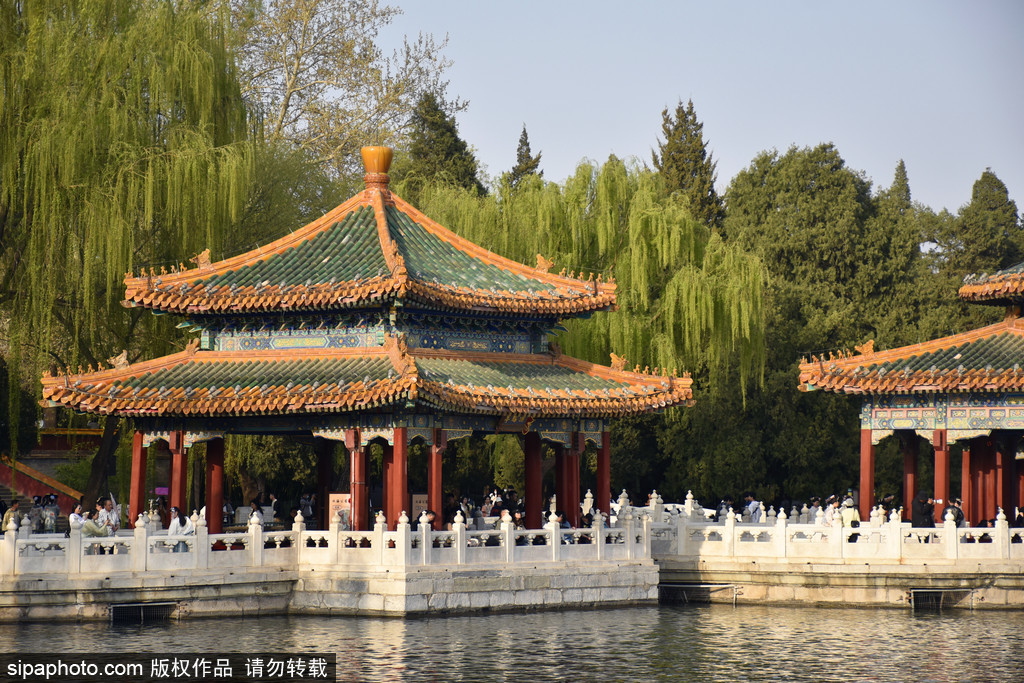
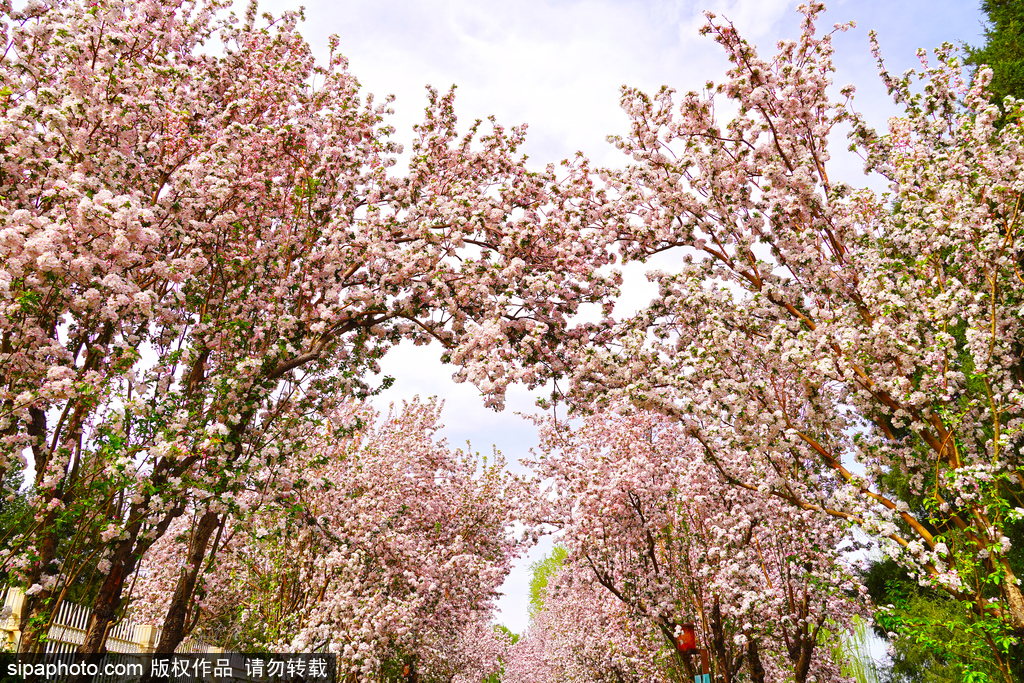
Beihai Park is an ancient royal garden with nearly a thousand years of history. Spring in Beihai Park is characterized by a sea of blossoms. "The beautiful white tower reflects on the lake, surrounded by green trees and red walls." Enjoying flowers, feeling the breeze, and boating are the perfect ways to experience spring in Beihai Park.
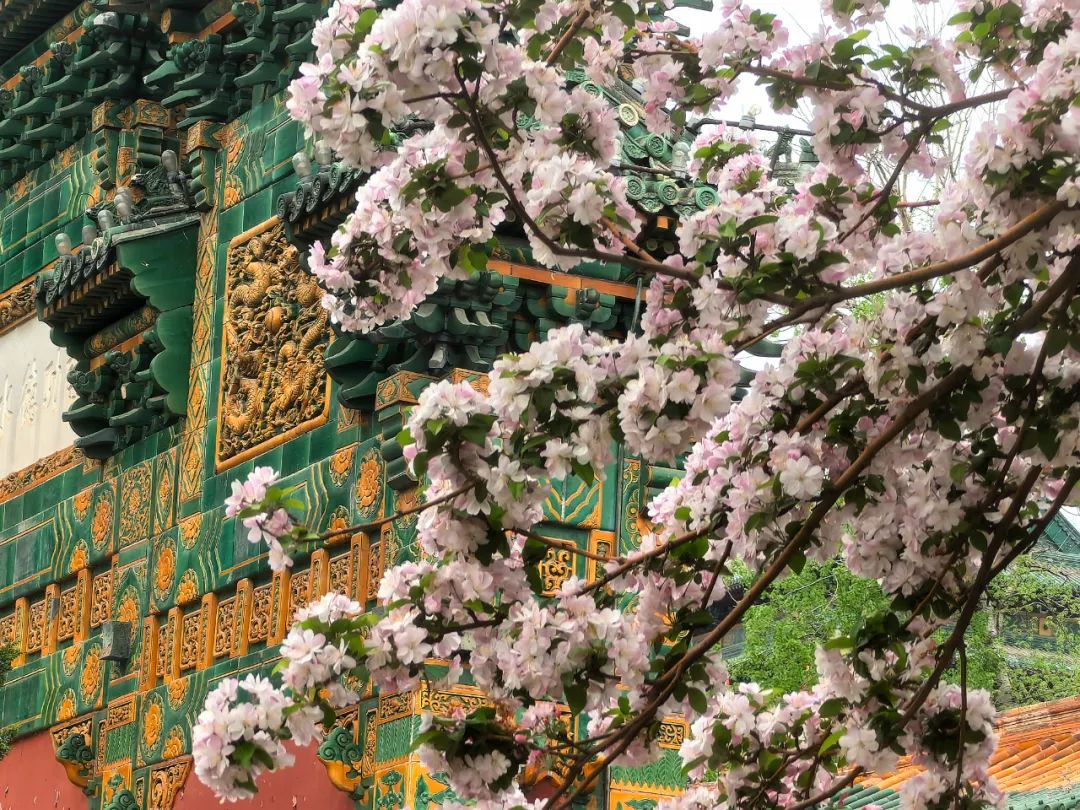
The crabapple blossoms in the park are in full bloom, with delicate pink flowers creating a stunning spectacle. Whether strolling under the flowering trees or stopping to admire the view, visitors can experience a sense of tranquility and beauty, encountering a romantic scene.
The best places to view crabapple blossoms in Beihai Park are along the west gate, the west bank, and the Double Rainbow Pavilion square on Jade Island. The ancient architecture complements the flowers, and the gentle breeze carries the subtle fragrance of the blossoms, creating a captivating scene of crabapples against ancient buildings.
Address: No. 1 Wenjinjie(St)Street, Xicheng District , Beijing
Prince Kung's Mansion
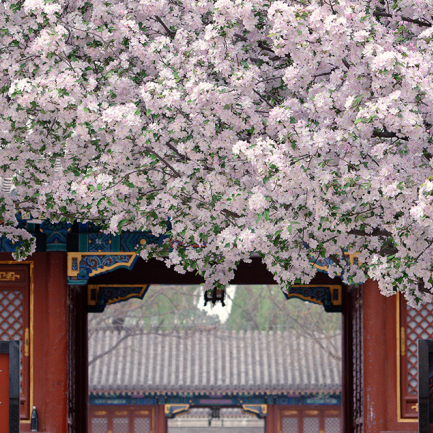
Prince Kung's Mansion, located on Qianhai West Street in Xicheng District, was built in 1780 during the 45th year of Emperor Qianlong's reign. The mansion was originally the residence of He Shen, a grand councilor. In the first year of Emperor Xianfeng's reign (1851), the mansion was conferred to Prince Kung, Aisin-Gioro Yixin, giving the mansion its name.
Prince Kung's Mansion is the largest and most well-preserved royal mansion of the Qing Dynasty, witnessing the rise and fall of the Qing Empire. Hence, it is often said, "One Prince Kung's Mansion, half of Qing Dynasty history."
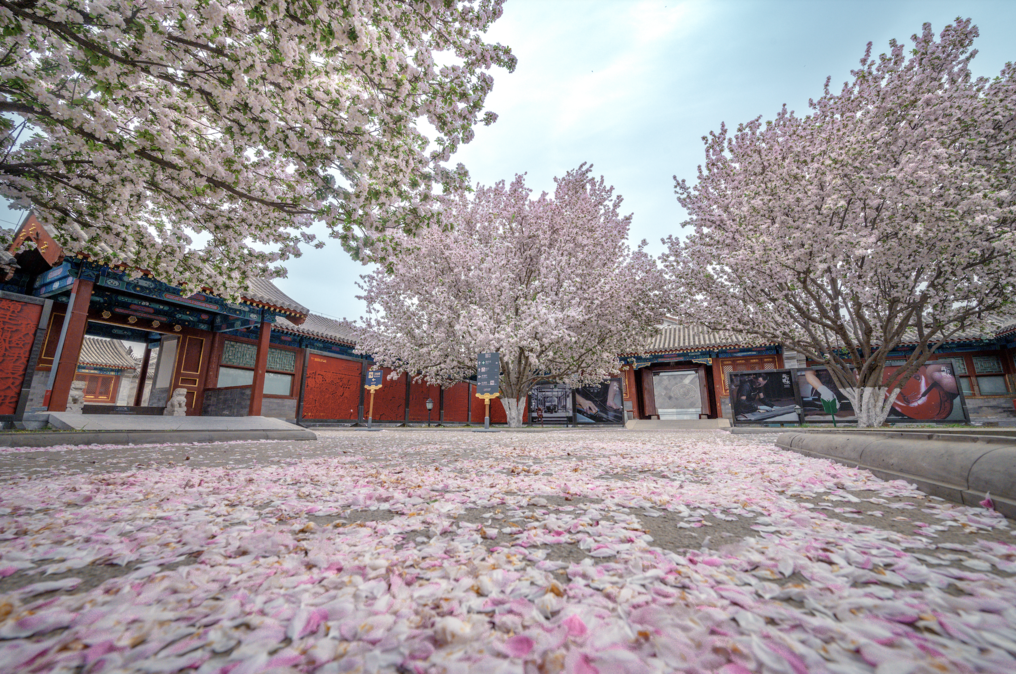
The mansion has a small pavilion called "Chenghuai Xiexiu," also known as the Flower and Moon Pavilion or Crabapple Pavilion, famous for its "Sargent crabapple" in front of the house. The name "Flower and Moon" refers to the scene when the crabapple flowers are in full bloom. People used to call the residence of the Alashan Wangfu as "East Mansion" and Prince Kung's Mansion as "West Mansion," hence the name "West Mansion Crabapple."
In the deep spring when the flowers bloom, the splendid colors of the flowers intertwine with the solemn charm of the ancient buildings, reflecting on the water with a pure and unblemished beauty.
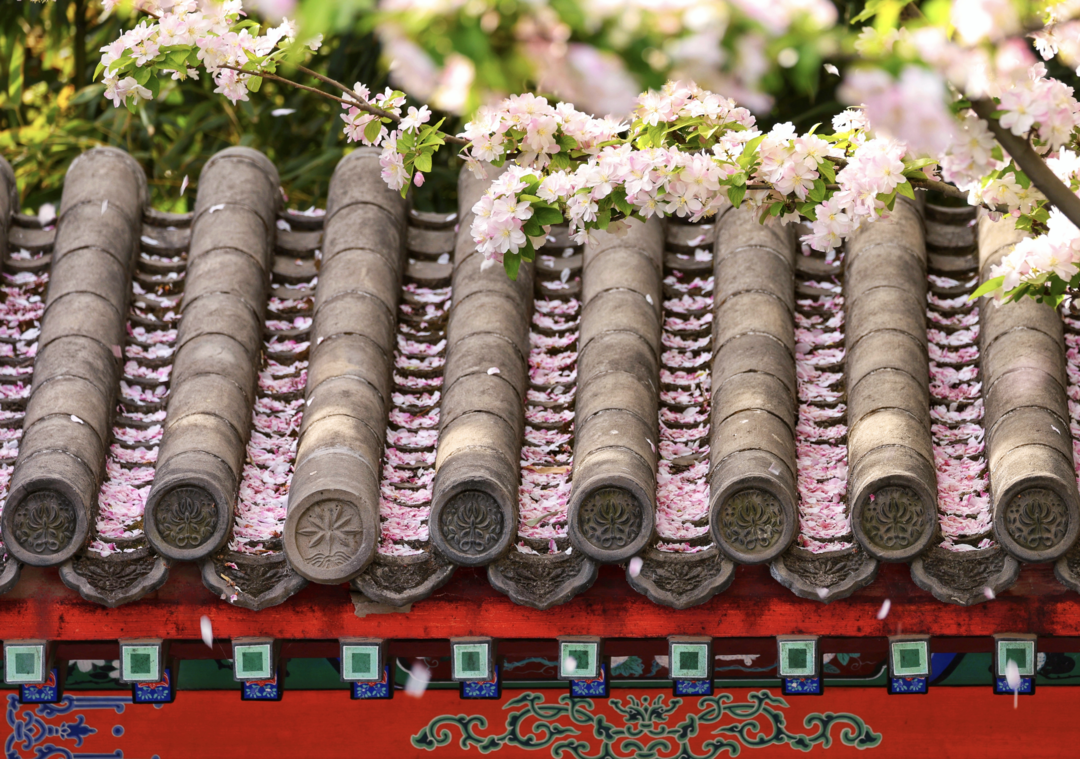
The Gong Prince's Mansion features lush vegetation year-round, "capturing the exuberance of the four seasons." Spring flowers are particularly stunning, offering a delightful scene of beauty and vitality, as if inviting you to step into a painting.
Address: No. 17 Qianhai Xijie(West Street), Shichahai Jiedao(Su), Xicheng District , Beijing
Soong Ching Ling's Former Residence
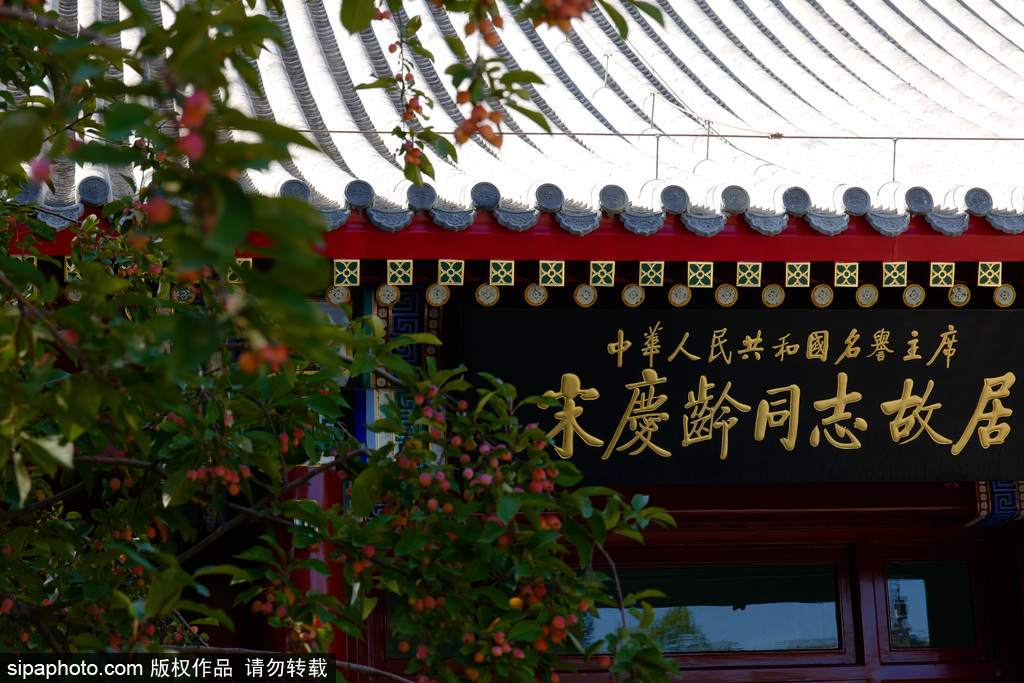
The former residence of Soong Ching Ling, located on the northern shore of Shichahai, was once the garden of Prince Chun's mansion, the father of the last emperor, Puyi. It has been designated a key national cultural heritage site. Soong Ching Ling lived here for nearly 20 years. After its opening, the residence exhibits many photos, letters, and personal items of Soong Ching Ling from her birth to her death.
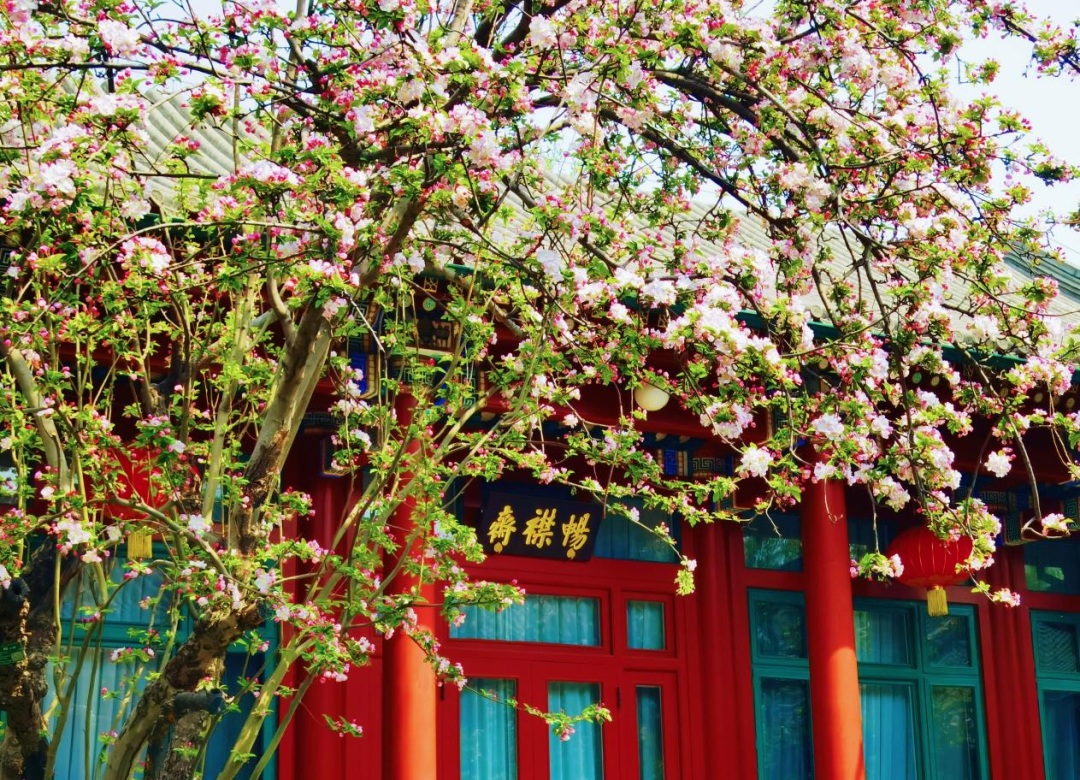
The residence has about ten crabapple trees, with the two oldest Sargent crabapple trees located in front of Changjinzhai. According to experts from the Beijing Gardening Bureau, these trees were planted in the 18th century and are over 200 years old.
The Sargent crabapples, set against the backdrop of Changjinzhai and the cooing of peace doves, bloom from buds to fully open flowers, creating a spectacular display of the "King of Crabapples" in Beijing. Visitors often feel a sense of nostalgia for Soong Ching Ling while walking under these trees.
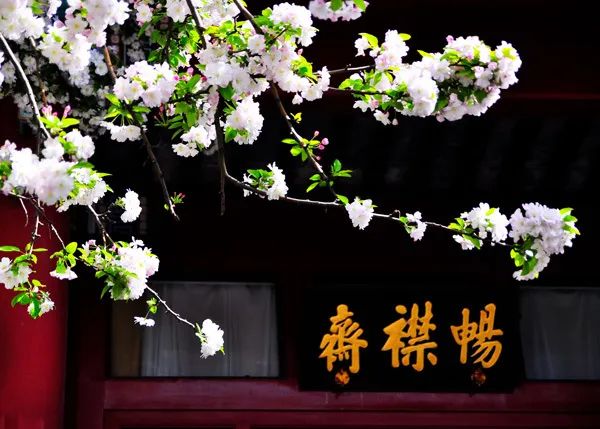
In addition to the ancient Sargent crabapples, the eastern square of the residence features two famous crabapple trees. During spring, the northern tree, named "Flame," produces white flowers, while the southern tree, named "Radiant," blooms with red flowers. Together, they create a striking red and white contrast.
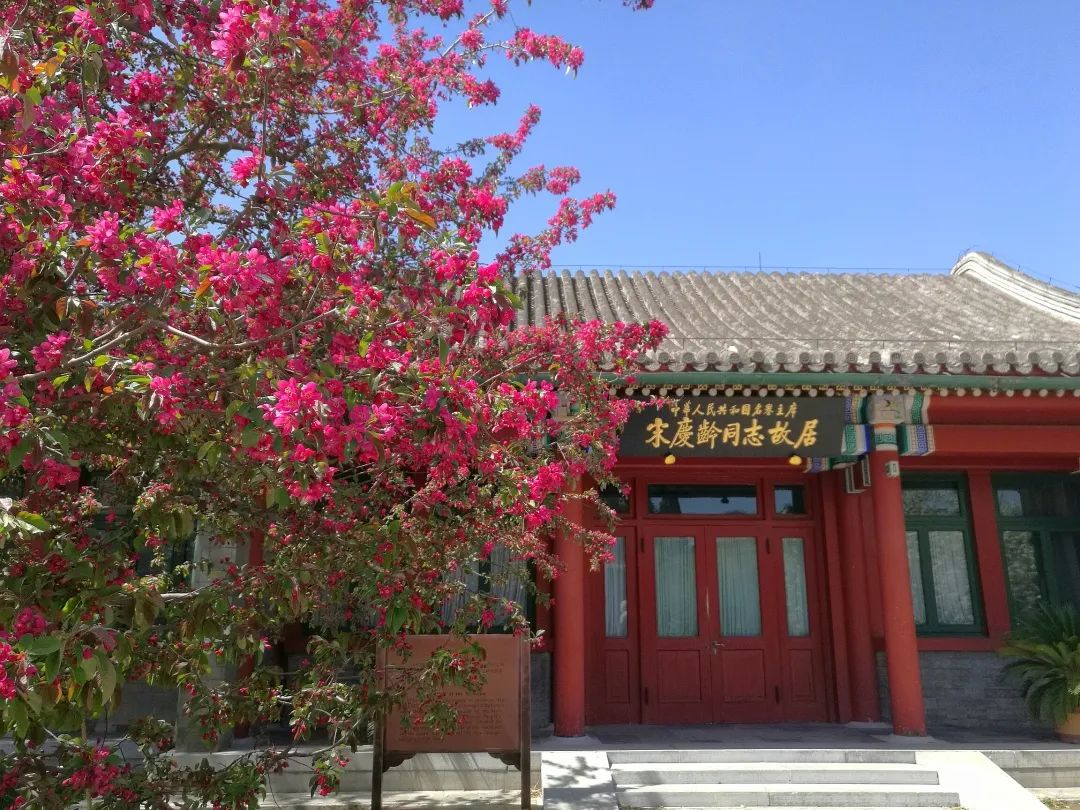
The 2024 Crabapple Culture Festival opening ceremony and poetry event took place on April 2, and the festival will last for a month. During the festival, visitors can admire the "King of Crabapples," enjoy the garden's beauty and historical architecture, and participate in cultural activities such as poetry readings and lectures.
Address: No. 46 Houhai Beiyan, Xicheng District , Beijing



